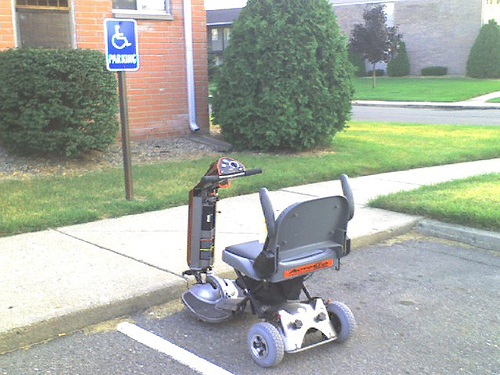Moving around can be a challenge for those who have been injured at work. Victims with injured backs and extremities often find that operating a standard motor vehicle is no longer possible.
However, most vehicles require only a few small and easily reversible modifications to enable access for the disabled. This allows those with injuries to move about with the same ease that they could prior to the injury without permanently limiting their vehicle’s resale value or precluding conventional operation.
First things first - did you submit a claim for disability with your employer? Is your status pending a decision or has your case been declined? Never give up - explore your legal rights! To get help if within Texas or anywhere in the U.S., contact Houston disability lawyers who work nationally to advocate for your rights.
Wheelchair and Disability Access
While you are working your claim, you will surely need and want to stay mobile. Something that was so simple before, like driving, can now be a challenge. Unless you enjoy being chauffeured, boost your spirits by learning how to rehab your vehicle to encompass your limited mobility.
Before investing in any vehicle modifications, owners with temporary injuries should take a close look at how easily the modifications may be reversed. Users with limited vision may wish to invest in larger conventional controls instead of purely electronic controls with smaller text and controls. How a particular vehicle should be modified will depend as much on its owner as on the disability.
Those with disabilities who use wheelchairs often find getting into the vehicle to be a procedure. Many people with wheelchairs obtain wheelchair accessible vans or modify existing vehicles for wheelchair access. This often comes in the form of equipping a van or minivan with an electronic lift and modifying the interior to allow access to the driver’s area from the rear.
For drivers with convertibles, sliding from the wheelchair into the driver’s seat and hoisting the wheelchair over to the passenger seat is also an option.
Users with conventional sedans and smaller sports utility vehicles may also have a full conversion done to enhance wheelchair access. These conversions usually require the installation of an electronic ramp, modification of the front and rear driver’s side doors, the B-pillar, and potentially the frames and floorboard. The driver’s seat may also require removal. These full conversions may or may not be easily reversible and are usually expensive.
Alternative Vehicle Controls
On most vehicles, the accelerator and brake pedals are designed to be operated by the right foot only. Left foot braking is reasonably practical, but accessing a standard accelerator with the left foot is very challenging. Those with limited use of one leg may require a throttle or brake pedal designed to be used by the alternate leg. This may include modifying the pedal arrangement or simply purchasing extended pedals.
Persons with limited use of both legs will benefit from hand controls for both the accelerator and brake. These controls come in a variety of arrangements. Some offer push and pull levers for the acceleration and braking functions; others duplicate the controls of a motorcycle with a twist throttle and a brake lever operated by one’s fingers. Which setup is right for which person is strictly user preference, although users with wrist injuries will usually find the levers to be more comfortable than a twist throttle. Electronic controls, allowing users to accelerate and brake by pressing a button, are also available.
Alternative steering controls are also common. These controls may come in the form of a smaller wheel, grip modifications, and small spinner wheels designed to be operated with a limited range of motion with one hand. Purely electronic steering is also available, consisting either of a small joystick or electronic touch depending upon the system and the user’s preference. This allows users who cannot grip a wheel or move their arms or wrists with a sufficient range of motion to operate their vehicle with complete safety.
Extended Standardized Controls
Victims with certain injuries or conditions often find that moving in a certain manner triggers intense pain, although they retain some functionality in all limbs. A few inches of movement can be the difference between a manageable movement and an extremely difficult motion. Instead of living with painful motions to access essential vehicle controls, motorists with such injuries or conditions should consider equipping their vehicles with extended controls.
Depending upon one’s need, extended controls may include extended pedals, extended turn signal levers, extended wiper and cruise control levers, and extended gear levers. Extended controls for windows, seat movements, and radio controls are also available. Almost any control can be extended or relocated. While modern antitheft systems make it difficult to relocate ignition systems, vehicle owners can purchase extended keys for easier access and manipulation. Keyless ignitions are available for most vehicles as aftermarket modifications.
There is no end to the modifications available for one’s vehicles to accommodate occupants with a disability. Whether a disabled person simply needs a modified steering wheel to accommodate a hand or wrist injury or whether a person requires a full conversion to his or her vehicle, he or she has endless options.
A free-lance writer of well-being, Teresa Stewart understands that staying as independent as possible is a large contributor of happiness. While researching mobility options, she discovered that denied work disabilities are appealed and aggressively litigated by Houston disability lawyers Marc Whitehead & Associates. With many years of experience and resources, they successfully represent clients by being compassionate and professional.
